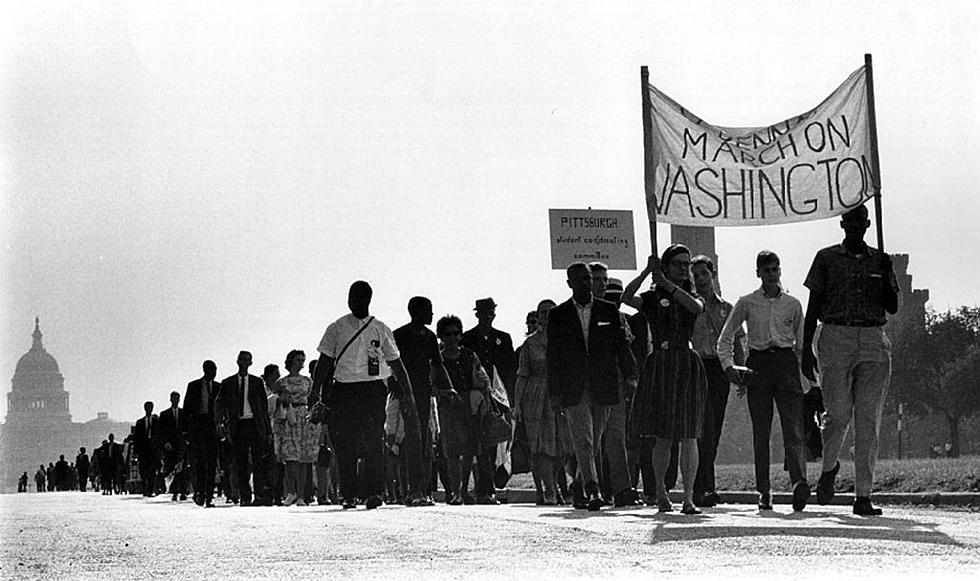
Important Black History Events That Happened In Western New York
Black history is American History, and Buffalo's contribution to this part of American History runs long and deep. So many events have happened in Buffalo, people who have lived in Buffalo, and places within Buffalo that have significantly impacted our country today.
Since 1964, when President Gerald Ford changed Black History Week to Black History Month, we've celebrated the cultural impact that has been made on American society by all of these important people and places. We may take some of these places for granted since we live with so many treasures in our community. Let's strive in 2024 to take full advantage of and learn everything Buffalo offers, including its contribution to black history.
Here are five events that were important to Black History that occurred in Buffalo:

Desegregation of the Buffalo Municipal Housing Authority
By the summer of 1987, an investigation determined that 9 of Buffalo’s 27 Public Housing projects were more than 90% Black and Hispanic, while another 9 were more than 90% white. Several developments had never had a non-white occupant. In addition to that, conditions in the majority of Black/Hispanic developments needed serious repair. During this same time, there were more than 3,000 people on the BMHA waiting list who mainly were Black and Hispanic, even though there were more than 2,000 vacancies. These conditions led to another Class Action Lawsuit being filed to combat racism. That lawsuit, which Federal Judge John Curtin heard, ultimately led to the Buffalo Municipal Housing Authority agreeing to integrate and modernize Buffalo’s public housing system. It took until 1996 before the system was considered fully integrated.
Desegregation of the Buffalo Public Schools
During the spring of 1972, a group of Buffalo citizens organized a class-action lawsuit against the City of Buffalo Public School System to end what they called an intentional system of disenfranchisement of Blacks in Buffalo by purposely running a segregated school system. By April 1976, Federal Judge John Curtin agreed with the citizens and ordered the Buffalo Public School to desegregate. This order came approximately 22 years after the landmark Brown v. Board of Education US Supreme Court Decision. Judge Curtin stated that Buffalo had created and maintained segregated schools in violation of the Equal Protection Clause of the US Constitution. It took until 1985 for the school system to be considered fully integrated.
Establishment of the Buffalo Urban League
Created in 1927 by a group of diverse and interracial Buffalo citizens, including Mrs. Alfred Schoelkopf, J. Edward Nash, and others, the Buffalo Urban League was established to help address the employment, housing, and social needs of African Americans and other immigrants migrating from the South to the North during the great migration. William L. Evans served as the first Executive Director of The League, and the organization worked to create job opportunities, housing, and encouragement for thousands of Black workers who now lived in Buffalo.
Creation of the Niagara Movement
Early during the year 1905, W.E.B. Du Bois and William Monroe-Trotter started to organize a meeting and invited 59 prominent and notable lawyers and essential community leaders to Buffalo, New York, to discuss and arrange opposition to racial segregation and disenfranchisement of Black Americans during that time. On July 11, 1905, 29 people showed up in Buffalo for the meeting. At the last minute, they moved the meeting across the Niagara River to Fort Erie, Ontario, where the Niagara Movement was born. The Niagara Movement was an important precursor to the National Association for the Advancement of Colored People (NAACP), founded in 1909.
The National Convention of Colored Men
By the mid-1800s, Buffalo had gained a reputation as a center in the anti-slave movements of the North. As of the summer 1843, the city had hosted its 2nd national convention to abolish slavery in the United States. The activity grew, and in August 1843, the city hosted two national anti-slavery conventions. One of those events, the National Convention of Colored Men, was held and featured a rousing speech by Frederick Douglass; during his speech, Douglass noted, “For nearly a week I spoke every day in this old post office to audiences constantly increasing in numbers and respectability till the Baptist church was thrown open to me. When this became too small I went on Sunday into the open park and addressed an assembly of 4,000 persons."
What other Black history events occurred in Buffalo that you know about?
5 Locations That Are Important to Black History in Buffalo
Gallery Credit: Ed Nice
Buffalo's 48th Juneteenth Celebration, Parade, and Festival
Gallery Credit: Ed Nice





